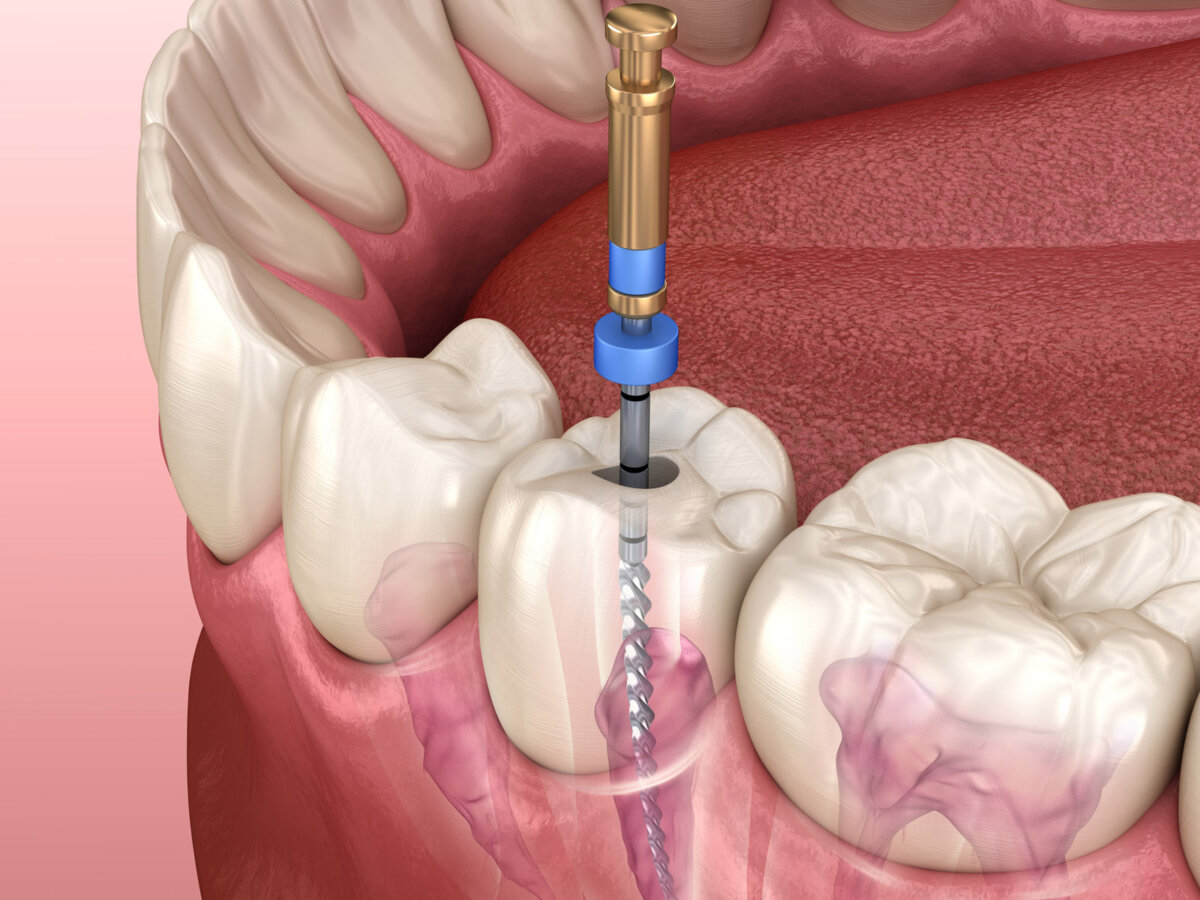How Painful is a Root Canal Without Anesthesia ? A root canal without anesthetic may be quite unpleasant. and should be avoided at all costs. However, with adequate anesthesia, a root canal procedure is generally not painful and provides relief from the discomfort caused by an infected tooth pulp.
Root canals, although often associated with pain and discomfort, are vital dental procedures that can save your natural teeth from extraction. Many people fear the idea of a root canal due to the misconception that the procedure is excruciating without anesthesia.
This article aims to clarify the reality of root canal pain and emphasize the importance of using anesthesia during the procedure. By understanding the benefits of anesthesia and the pain-relieving aspect it provides, you can approach a root canal with confidence and seek necessary treatment without unnecessary worry. So let’s delve into the facts and debunk the myths surrounding the pain associated with root canals without anesthesia.

Credit: www.benbrookfamilydental.com
The Process Of A Root Canal
In a root canal procedure, the pulp of the tooth is removed and the inside is cleaned and sealed to save a tooth that is badly decayed or infected. Although the thought of a root canal can be daunting, the procedure is actually relatively painless, especially when anesthesia is used. However, the pain associated with a root canal without anesthesia can be quite intense. Let’s take a closer look at the process of a root canal and delve into the details of this dental treatment.
What Is A Root Canal?
A root canal is a dental procedure performed to remove infected or damaged pulp from a tooth. The pulp is the soft tissue within the tooth that contains nerves, blood vessels, and connective tissue. When the pulp becomes infected or inflamed, it can cause severe pain and lead to abscess formation if left untreated.
The Steps Involved In A Root Canal
- Diagnosis: The dentist will first examine the tooth and take X-rays to determine the extent of the damage and confirm the need for a root canal.
- Anesthesia: Local anesthesia is administered to numb the area and ensure a pain-free experience during the procedure.
- Pulp removal: The dentist creates an opening in the tooth and removes the infected or inflamed pulp using special instruments.
- Cleaning and shaping: The interior of the tooth is cleaned, shaped, and disinfected to remove any remaining bacteria and debris.
- Sealing: Once the tooth is thoroughly cleaned, it is filled and sealed with a rubber-like material to prevent future infection.
- Restoration: In many cases, a crown is placed on the tooth to restore its strength and function.
Understanding Anesthesia In Dentistry
Anesthesia plays a crucial role in making root canal procedures painless. Without anesthesia, a root canal can be extremely painful, making it important for patients to understand the benefits of anesthesia in dentistry.
Understanding Anesthesia in Dentistry When it comes to dental procedures, understanding anesthesia is crucial for a pain-free and comfortable experience. Anesthesia is used to numb the area being treated, ensuring that patients experience minimal discomfort during procedures such as root canals. In this section, we will explore the importance of anesthesia in dentistry and the different types used.
The Importance Of Anesthesia
Anesthesia plays a vital role in dentistry as it helps to eliminate or reduce pain and discomfort during various dental procedures. Whether it’s a simple filling or a complex root canal, anesthesia allows dentists to work efficiently while ensuring patients remain comfortable. By numbing the affected area, anesthesia helps to block pain signals, making the procedure less painful and more tolerable for patients.
Different Types Of Anesthesia Used In Dentistry
Dentistry offers various types of anesthesia to accommodate different procedures and patient needs. These include:
| Anesthesia Type | Description |
|---|---|
| Local anesthesia | Administered through an injection near the treatment area, numbing the specific region and preventing pain signals from reaching the brain. |
| Topical anesthesia | Applied directly to the surface of the gums, it numbs the area before the injection of local anesthesia, easing any initial discomfort. |
| Intravenous (IV) sedation | Administered through an injection into a vein, this type of anesthesia induces a state of deep relaxation, reducing anxiety and discomfort during procedures. |
| General anesthesia | Reserved for complex dental surgeries, general anesthesia puts patients into a deep sleep, ensuring they are unconscious and unable to experience any pain during the procedure. |
By offering a range of anesthesia options, dentists can personalize the treatment experience, addressing individual patient needs and the specific procedure being performed. This ability to tailor anesthesia ensures that patients can undergo dental treatments with minimal pain and discomfort. Now that we understand the vital role of anesthesia in dentistry and the different options available, let’s explore the specific experience of having a root canal without anesthesia to understand the potential pain involved.
The Role Of Anesthesia In Root Canals
The thought of needing a root canal can be intimidating enough, but the idea of undergoing the procedure without any form of anesthesia can turn it into a nightmare. Anesthesia plays a crucial role in root canals, providing much-needed relief from pain and ensuring a comfortable experience for the patient.
Why Anesthesia Is Used In Root Canals
Anesthesia is an integral part of the root canal process as it numbs the area around the affected tooth, preventing any discomfort or pain during the procedure. Since a root canal involves accessing the pulp chamber deep within the tooth, anesthesia is essential to minimize the sensation of pain. Without anesthesia, the patient would feel every bit of drilling and manipulation involved in the treatment, making it an incredibly painful and distressing experience.
Benefits Of Using Anesthesia During A Root Canal
Using anesthesia during a root canal offers several benefits, ensuring a smooth and pain-free procedure. Here are some key advantages:
- Pain relief: Anesthesia eliminates pain by blocking the nerve signals in the affected area, allowing the dentist to work without causing discomfort.
- Reduced anxiety: By numbing the tooth and surrounding tissues, anesthesia helps alleviate the anxiety and fear associated with dental procedures, making the patient feel more at ease.
- Improved control: Anesthesia relaxes the patient’s muscles, enabling the dentist to have better control and precision during the root canal, resulting in a more successful outcome.
- Enhanced patient experience: The use of anesthesia ensures a more comfortable and tolerable root canal experience, allowing patients to undergo the necessary treatment without unnecessary pain or distress.
In conclusion, anesthesia plays a vital role in root canals by providing pain relief, reducing anxiety, improving control, and enhancing the overall patient experience. By using anesthesia during this procedure, dentists can ensure a comfortable and successful root canal treatment, promoting better oral health and overall well-being.

Credit: www.brooklynheightsdental.com
What Happens If Anesthesia Is Not Used?
A root canal without anesthesia can be extremely painful as the procedure involves removing infected tissue and nerves from the tooth. Patients may experience intense discomfort, making it essential to use anesthesia for pain management during the process. Without anesthesia, the pain can be excruciating and intolerable.
Levels Of Pain During A Root Canal
In the absence of anesthesia, undergoing a root canal can lead to extreme discomfort. The process involves accessing the root of the tooth to remove infected tissue, which can cause intense pain.
As the dental professional works to clean and fill the root canal, the patient may experience sharp, throbbing, and persistent pain. The sense of pressure and sensitivity can be very high, making the procedure unbearable without proper anesthesia.
Potential Complications Of Not Using Anesthesia
Without the use of anesthesia during a root canal, not only can the patient experience excruciating pain, but there are also potential risks and complications that may arise.
The high level of discomfort and anxiety can lead to increased stress and even panic during the procedure, making it challenging for the dental professional to carry out the treatment effectively. Additionally, the lack of anesthesia can result in an incomplete procedure due to the patient’s inability to remain still and cooperative.
Managing Discomfort During A Root Canal
If you’re scheduled to undergo a root canal, you may have concerns about the potential pain associated with the procedure. While root canals are generally performed with the use of local anesthesia to minimize pain, some individuals may worry about the possibility of feeling discomfort during the treatment. However, there are alternate options to traditional anesthesia that can be considered, along with several tips for coping with any pain that may arise during a root canal.
Alternatives To Traditional Anesthesia
For those who prefer to explore alternatives to traditional anesthesia methods, there are options available. One such alternative is nitrous oxide, commonly known as laughing gas. Nitrous oxide is an inhalation sedative that helps relax the patient during the procedure and minimizes any discomfort that may be experienced. Another option is conscious sedation, which involves the administration of oral medications or intravenous sedatives to induce a state of relaxation and reduce pain sensitivity.
Tips For Coping With Pain During A Root Canal
If you decide to go with the conventional anesthesia but still have concerns about potential pain, there are ways to manage discomfort effectively. Here are some tips:
- Deep Breathing: Practice deep breathing techniques during the procedure to help relax your body and distract your mind from any potential pain.
- Utilize Distractions: Bring headphones and listen to calming music or a podcast during the root canal to divert your attention away from the treatment.
- Consider Sedatives: Consult with your dentist about the possibility of taking a mild sedative before the procedure to calm your nerves and reduce anxiety.
- Ask for Breaks: Inform your dentist if you need to take short breaks during the root canal to stretch or relax your muscles if you feel any discomfort.
- Open Communication: Maintain open communication with your dentist throughout the procedure, informing them of any pain or discomfort you may be experiencing so they can make adjustments as necessary.
By considering these alternatives to traditional anesthesia and utilizing the tips for coping with pain, you can manage any discomfort that may arise during a root canal procedure. Remember, always communicate openly with your dentist and discuss your concerns to ensure a more comfortable experience.

Credit: eastorangeendodontics.com
Frequently Asked Questions On How Painful Is A Root Canal Without Anesthesia
Can A Root Canal Be Painful Without Anesthesia?
A root canal without anesthesia can be extremely painful. The procedure involves removing infected nerves from the tooth’s root, and without anesthesia, patients may experience severe pain. Anesthesia is crucial to numb the area and ensure a pain-free experience during the root canal.
Conclusion
Undergoing a root canal without anesthesia is a highly painful experience that should be avoided at all costs. The treatment’s excruciating nature can be unbearable and traumatizing, making it vital to seek professional and compassionate dental care. With proper anesthesia, the procedure can be much more manageable and less distressing for patients.

I am a dentist and also blog regularly. my target audience is America Europe & providing regular information for them.
